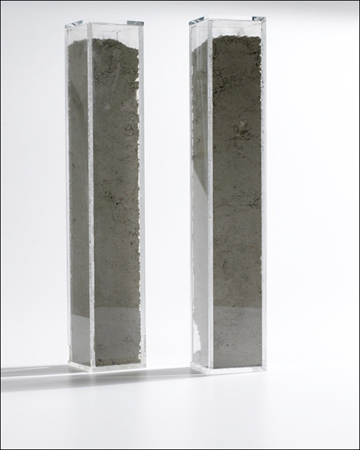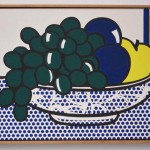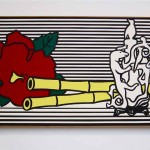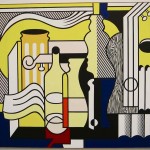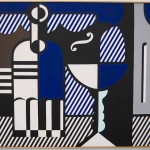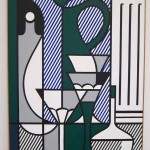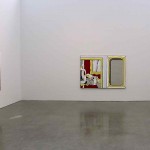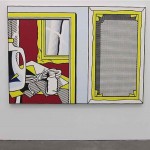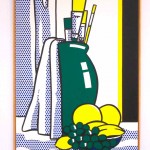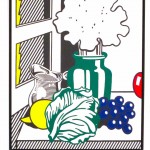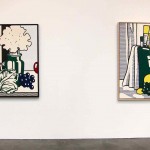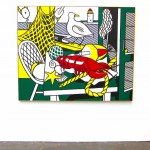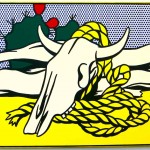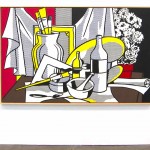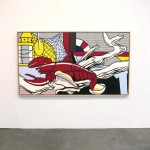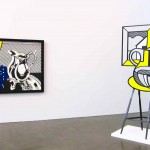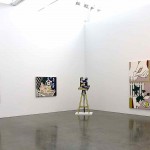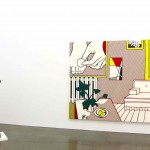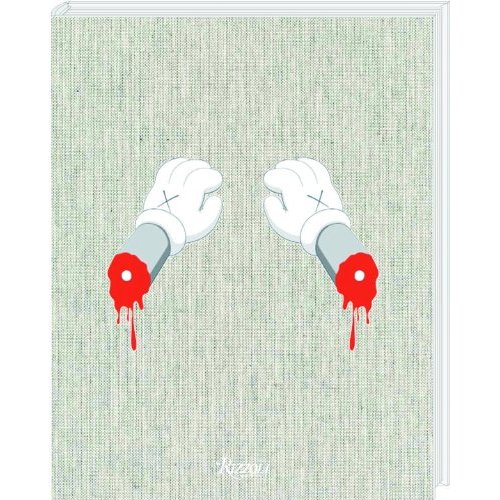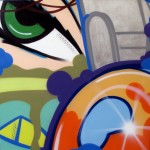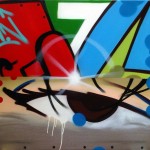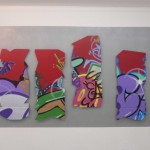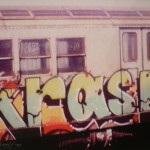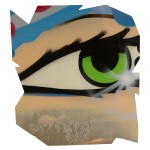Archive for the 'History' Category
Wednesday, September 15th, 2010
Remembering 9/11
The twin beacons of light eminating from lower Manhattan and illuminating the New York night sky this week are a somber reminder of those who lost their lives in the attacks on the World Trade Center. Currently in its eighth year, the memorial was spearheaded by Creative Time in partnership with the Municipal Arts Society and artists Julian LaVerdiere and Paul Myoda.
Tuesday, June 22nd, 2010
Pop Will Eat Itself :: Lichtenstein’s Still Lifes at Gagosian
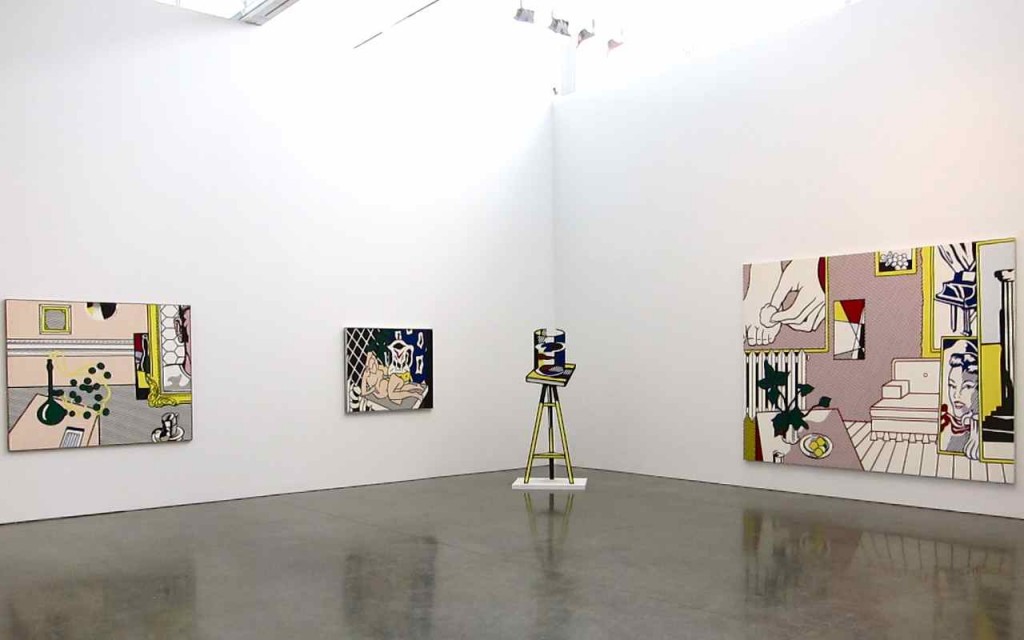
(All photos: Jeff Newman/TheArtCollectors)
Though Roy Lichtenstein is most remembered for his pioneering contributions to the early American pop movement of the 1960s, he continued to make new art up to the 1990s. From 1972 – 1986 he produced a large body of painting and sculpture that can be described as pop still-lifes. Technically, these were rendered in the same style of his popular comic-book based art, mimicking mechanical methods of production through the use of vivid primary colors, sharp lines, and his trademark simulation of the Ben-Day printing process. Thematically however, Lichtenstein’s subject matter veered away from mass culture and the recreation of commercial imagery. In place of D.C. comic panels we find the objects of traditional still life painting like fruits, vases or items arranged on tables.
Make the mistake of reading too carefully, and you might think there was some grand message here – that in the same way mass media has, the stuff of these works too has become part of our collective consumer conscience. However, like the rest of his art, Lichtenstein was quick to question any profound reading of this series, noting, “When we think of still lifes, we think of paintings that have a certain atmosphere or ambience. My still life paintings have none of those qualities, they just have pictures of certain things that are in a still life, like lemons and grapefruits and so forth.”
For a body of work whose deeper meaning even the artist was quick to denounce, this is truly a site to behold. In the first exhibition devoted entirely to this series, Gagosian Gallery’s presentation of some fifty still lifes is one that rises to museum standards and deserves to outlive its summer gallery viewing. That being said, reflecting on his art with John Coplans in 1972, Lichtenstein remarked, “I don’t think that whatever is meant by it is important to art.”
Roy Lichtenstein – Still Lifes
Gagosian Gallery
May 8 – July 30
555 West 24th Street
New York, NY 10011
212.741.1111
(All text and photos: Jeff Newman/TheArtCollectors)
Wednesday, June 9th, 2010
Historic Haring Mural in Need of Rescue
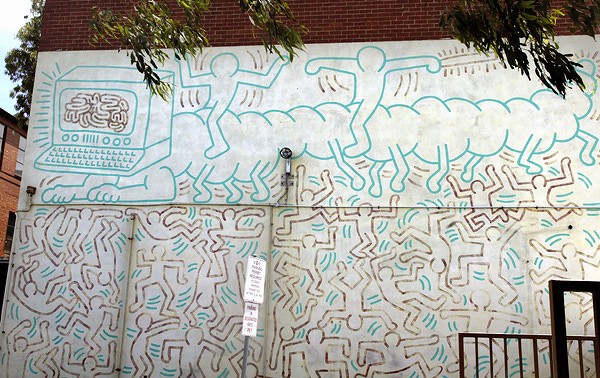
The faded and damaged Haring mural as it looks today. (Image: Andrew De La Rue via Sydney Morning Herald)
The Art Newspaper reports that the last surviving mural Keith Haring painted entirely on his own, and the first project he completed with the assistance of a cherry picker, is in dire need of preservation. Painted in 1984 during Haring’s only visit to Australia, the mural occupies the wall of the former Collingwood Technical College in a Melbourne suburb. Last restored in 1996, the significant work has not been maintained for almost 15 years, and suffers from significant surface lifting and cracking of the paint. Estimates to stabilize the outdoor work are reported at A$25,000 ($22,000 US), with an additional A$1,000 ($900) for annual upkeep.
Several major Australian arts institutions and local municipalities have banned together to raise support for its restoration. “It is our own government who has lapsed in its duty of care,” said one spokesperson, noting that the building is owned by the Victorian State Government and that the mural sits on its heritage registry.
”Yarra’s mayor Jane Garrett said, “The mural is a part of Yarra and inner-Melbourne’s cultural and physical landscape—and we want to ensure it stays that way,” adding that interested parties were in the process of setting up a working group including representatives from the arts community and other interested parties to “discuss the mural’s future and come to a consensus on the most appropriate way to preserve it.”
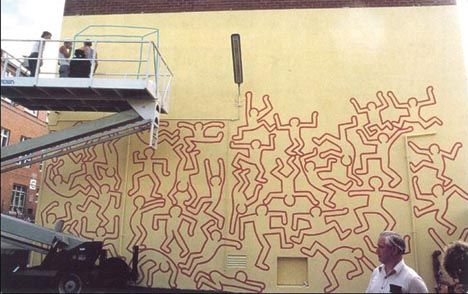
The original mural in progress durning Haring’s 1984 visit to Melbourne (Image via The Art Newspaper)
In more productive news, a new series of Keith Haring adhesive wall graphics (pictured below) has been released by Bilk, with several different designs available from $18 – $55.
Monday, June 7th, 2010
Germano Celant Contributes to upcoming KAWS Book
KAWS‘ first comprehensive print survey is set to release September 21 via Rizzoli, one of the most respected names in art publishing. The book includes contributions by Monica Ramirez-Montagut, curator at The Aldrich Contemporary Art Museum in Connecticut (where KAWS opens his first museum show later this month) and Germano Celant, whose lengthy credentials include the titles of Director of Fondazione Prada in Milan, Senior Curator of Contemporary Art at the Guggenheim, Artistic Director of the first Florence Biennial in 1996, and Curator of the 1997 Venice Biennale.
This is not the first time Celant has taken an interest in artists who have crossed over from the street. In 2002 he curated Barry McGee’s first major international solo museum exhibition at Fondazione Prada, and interviewed the artist for the show’s catalog.
Celant’s interest in artists whose roots run deep in graffiti culture is easy to understand. His own contributions to contemporary art span more than 40 years, and can be traced back to the 1960s, when he spawned Arte Povera in Italy. Created in support of artists who were creating in mediums beyond those historically accepted, the loose-knit movement (literally translated as “poor art”) championed art made without any material, theoretical, or economic restraints, that, much like modern graffiti, could thrive free of the art-establishment or market place. It’s worth noting, just as many of that movement’s pioneers eventually reached larger levels of critical recognition and financial success, so have artists like KAWS and McGee.
Sunday, June 6th, 2010
Out of the Blue, Into the Air :: Yves Klein Retrospective at Hirshhorn

Yves Klein, Le Saut dans le vide [Leap into the Void], at 5, rue Gentil-Bernard, Fontenay-aux-Roses, France, October 1960. © 2010 Artists Rights Society(ARS), New York/ADAGP, Paris. Photo by Shunk-Kender, © Roy Lichtenstein Foundation. Courtesy Yves Klein Archives.
It is astounding that there hasn’t been a significant showing of Yves Klein in the U.S. for nearly three decades – almost as many years long as the artist’s short life. The fatal heart attack suffered by the 34 year old in 1962 signaled the end of a creative career that came and went in under a decade. Still, with little reference to anything that had come before, Klein’s contributions helped inform the transition from modern art’s focus on the tangible, to contemporary conceptual concerns with the theoretical.
The Hirshhorn Museum’s (Washington D.C.) current retrospective is a appropriate homage to such an important figure. Yves Klein: With the Void, Full Powers, includes major examples from every aspect of the artist’s career, including his Anthropometries, Cosmogonies, fire paintings, planetary reliefs, blue monochromes, sponge reliefs, “air architecture,” and immaterial works.
As crucial as his physical forms, are the ideas Klein communicated through bold and and acutely self-aware manifestos, personal notes, letters and interviews. Here, the museum has resurrected the artist-philosopher, allowing Kelin to share his own story and and ideas through a spirited and dynamic timeline that effectively aggregates multiple online social and media platforms. “We felt it was essential not only to present Klein as the maker of beautiful objects but also as a thinker, a philosopher who paved the way for future generations,” says exhibition co-curator Kerry Brougher, chief curator and deputy director of the Museum.
Selection from Yves Klein: The Blue Revolution. Director: François Lévy-Kuentz. Courtesy Yves Klein Archives. Coproduction © 2006 MK2TV, Le Centre Pompidou, Y Amu Klein/Moquay in association with France 5. Video © 2007 Le Réunion des musées nationaux—EDV 288
Visit the Hirshhorn now until September 12, and access the museum’s social media archive and interactive timeline here
Also essential are the online Yves Klein Archives and Pompidou’s archive of their 2007 exhibition.
Read on for more images Read the rest of this entry »
Monday, February 15th, 2010
John Matos Crashes Down in Paris
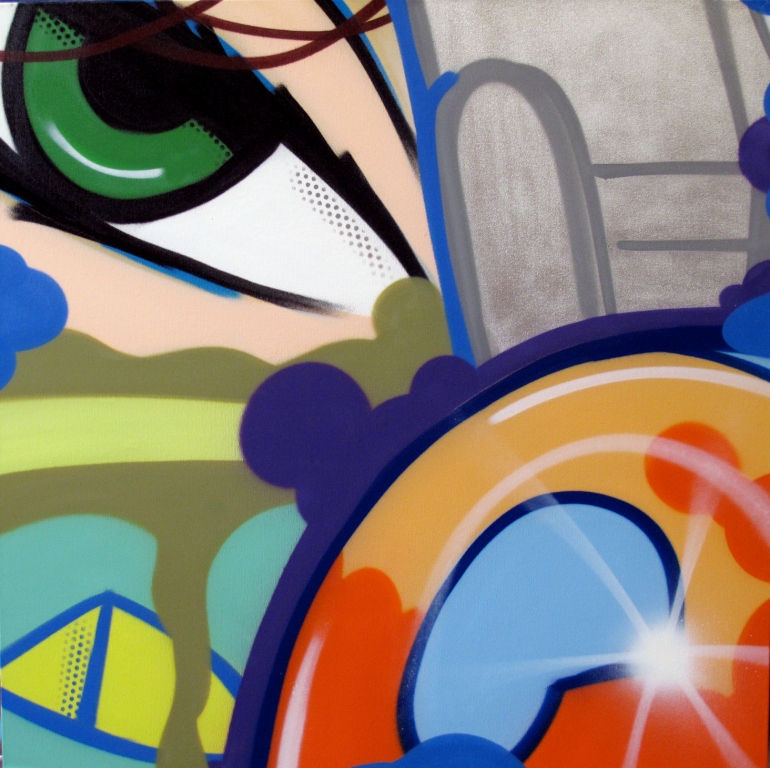
CRASH (John Matos), Tin Machine 3, 2009 (All Image: © Addict Galerie/John Matos)
Born in the Bronx in 1961, John CRASH Matos is widely know as a pioneer of NY subway graffiti, and one of the first of his kind to transition into fine art. By 1980, Matos had abandoned streets and trains in favor of gallery walls, and gained fast recognition with his first solo show at the famed Sidney Janis Gallery in 1983, and exhibiting alongside Basquiat and Keith Haring. His works are held in countless prominent collections including the Museum of Modern Art NY, Keith Haring Foundation, Stedelijk Museum, Neumann Family Collection, Rubell Family Collection, and the Collection of Dakis Joannou.
For Tin Machines, his current exhibition at Addict Galerie (Paris), Matos’ conjures up early inspirations with canvases that evoke the subway cars of his youth. Presented alongside these new works are enlarged photos documenting his legendary graffiti, offering a time capsule and link to his ephemeral roots. While most others attempts are questionable, here is one of the rare instances of a graffiti writer whose movement into fine art is warranted, and whose accomplishments in both worlds have been rightfully heralded for their historical significance.
CRASH – Tin Machines
Jan 30 – March 3
Extension from March 16 – 23
Addict Galerie
14/16 rue de Thorigny
75003, Paris
Thursday, February 11th, 2010
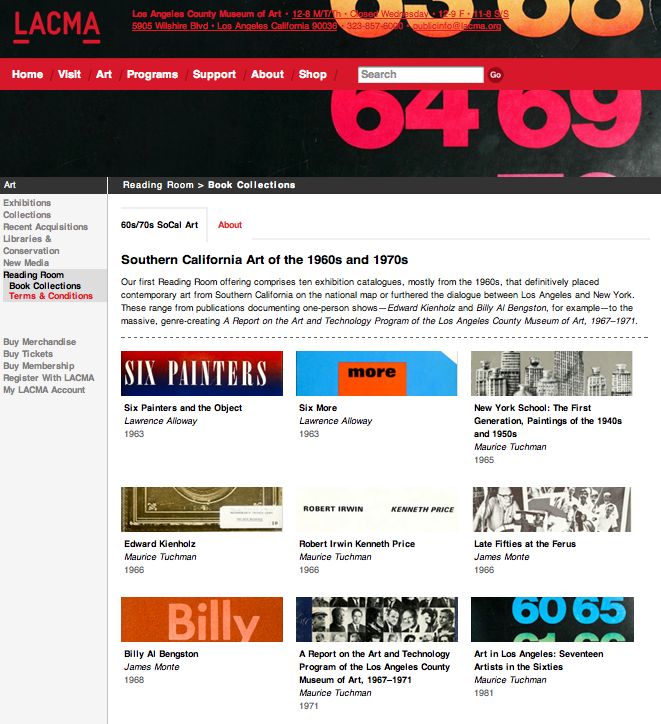
The Los Angeles County Museum of Art has just launched an online reading room, where they are gradually making available a full range of electronic facsimiles of museum publications spanning their history. LACMA’s initial offering comprises ten early exhibition catalogues, mostly from the 1960s, and serves as an invaluable academic resource.

